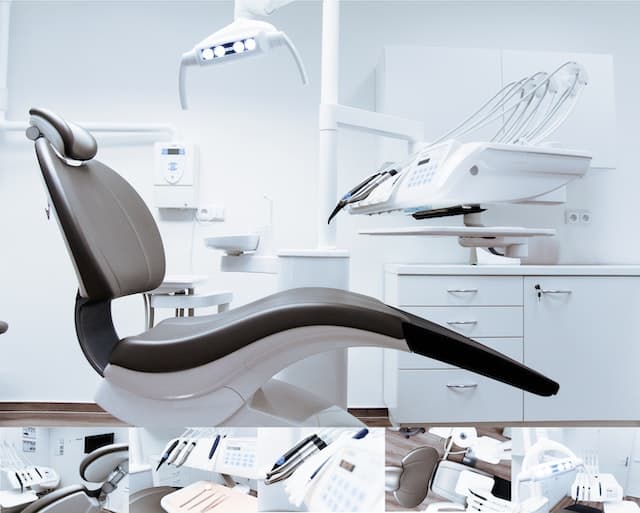A GAP analysis is one of the most effective methods for evaluating the performance, strength and possibilities of any healthcare industry business. It can make a brand owner aware of shortcomings that can be improved upon. GAP analysis for a healthcare business usually involves following a number of steps.
The healthcare industry is a vast and complex sector that encompasses various organizations, professionals, and services dedicated to maintaining and improving people’s health. It plays a crucial role in society by providing medical care, promoting wellness, conducting research, and developing new treatments and technologies.
Table of Contents
Key Components of the Healthcare Industry
- Healthcare Providers: These include hospitals, clinics, nursing homes, and other facilities where healthcare services are delivered. They employ doctors, nurses, technicians, and support staff to diagnose and treat patients.
- Pharmaceutical Industry: Pharmaceutical companies research, develop, produce, and market drugs and medications. They work closely with regulatory authorities to ensure safety and efficacy before the products reach the market.
- Medical Device Companies: These companies design, manufacture, and distribute medical equipment and devices used in diagnosis, treatment, and monitoring of patients. Examples include surgical instruments, imaging machines, and prosthetics.
- Health Insurance: Insurance companies offer various health insurance plans to individuals and groups, providing financial coverage for medical expenses. They negotiate contracts with healthcare providers and manage reimbursement processes.
- Biotechnology: Biotech firms focus on utilizing biological processes and organisms to develop products and technologies for healthcare. They may work on areas like genetic engineering, personalized medicine, and biopharmaceutical production.
- Telemedicine: Telemedicine involves the use of technology to provide remote medical services. It allows patients to consult with healthcare professionals through video calls, online platforms, and remote monitoring devices.
- Research and Development: Academic institutions, research organizations, and pharmaceutical companies conduct medical research to advance our understanding of diseases, develop new treatments, and improve healthcare practices.
- Public Health: Public health organizations work on disease prevention, health promotion, and community health initiatives. They focus on areas such as epidemiology, vaccination campaigns, health education, and policy development.
Challenges and Trends
The healthcare industry faces numerous challenges and undergoes constant evolution. Some notable trends include:
- Technological Advancements: Rapid advancements in medical technology, such as artificial intelligence, robotics, genomics, and wearable devices, are transforming healthcare delivery, diagnosis, and treatment options.
- Data and Analytics: The industry generates vast amounts of data, and the use of data analytics and electronic health records can improve patient care, population health management, and medical research.
- Rising Costs: Healthcare costs continue to rise globally, driven by factors like expensive treatments, aging populations, chronic diseases, and increasing demand for healthcare services.
- Patient-Centric Care: There is a shift towards personalized, patient-centered care models, focusing on individual needs, preferences, and engagement in decision-making.
- Preventive Care and Population Health: Emphasizing preventive care and managing population health is gaining importance to reduce the burden of chronic diseases and promote overall wellness.
- Healthcare Access and Equity: Efforts are being made to improve access to healthcare services and address disparities in healthcare outcomes among different populations.
- Digital Health and Telemedicine: The COVID-19 pandemic accelerated the adoption of telemedicine and digital health solutions, enabling remote consultations, monitoring, and improved accessibility to care.
- Regulatory Environment: Healthcare regulations and policies evolve to address issues like patient privacy, data security, drug approvals, and the balance between innovation and safety.
These are just some of the aspects and trends within the healthcare industry, which remains dynamic and essential for the well-being of individuals and societies as a whole.
GAP analysis is a tool used in healthcare to identify areas where improvements can be made in patient care. By analyzing the current state of healthcare delivery and comparing it to the desired state, healthcare providers can identify gaps in care and develop strategies to close those gaps. Technology plays a crucial role in this process, as it enables healthcare providers to collect and analyze data more efficiently, identify trends and patterns, and develop targeted interventions to improve patient outcomes. In this article, we’ll explore how GAP analysis is being used in healthcare and the role of technology in this process.
6 Steps to Conducting a Successful GAP Analysis in Healthcare
1. Identify the current state of the healthcare industry
The first step in conducting a GAP analysis for healthcare industries is to identify the current state of the industry. This involves gathering data on the current trends, challenges, and opportunities in the healthcare industry. This information can be obtained through research, surveys, and interviews with industry experts.
2. Define the desired state
The next step is to define the desired state of the healthcare industry. This involves setting goals and objectives that the industry should strive to achieve. These goals should be specific, measurable, achievable, relevant, and time-bound (SMART).
3. Identify the gaps
Once the current state and desired state have been defined, the next step is to identify the gaps between the two. This involves analyzing the data collected in step one and comparing it to the goals and objectives set in step two. The gaps can be identified in terms of processes, systems, technology, skills, and resources.
4. Prioritize the gaps
After identifying the gaps, the next step is to prioritize them based on their impact on the healthcare industry. This involves assessing the severity of each gap and determining which ones need to be addressed first. Prioritizing the gaps helps to focus resources and efforts on the most critical areas.
5. Develop an action plan
Once the gaps have been prioritized, the next step is to develop an action plan to address them. This involves identifying the specific actions that need to be taken to close the gaps and achieve the desired state. The action plan should include timelines, responsibilities, and resources required to implement the plan.
6. Monitor and evaluate progress
The final step in conducting a GAP analysis for healthcare industries is to monitor and evaluate progress. This involves tracking the implementation of the action plan and measuring the results against the goals and objectives set in step two. Monitoring and evaluation help to ensure that the healthcare industry is moving in the right direction and making progress towards the desired state.























